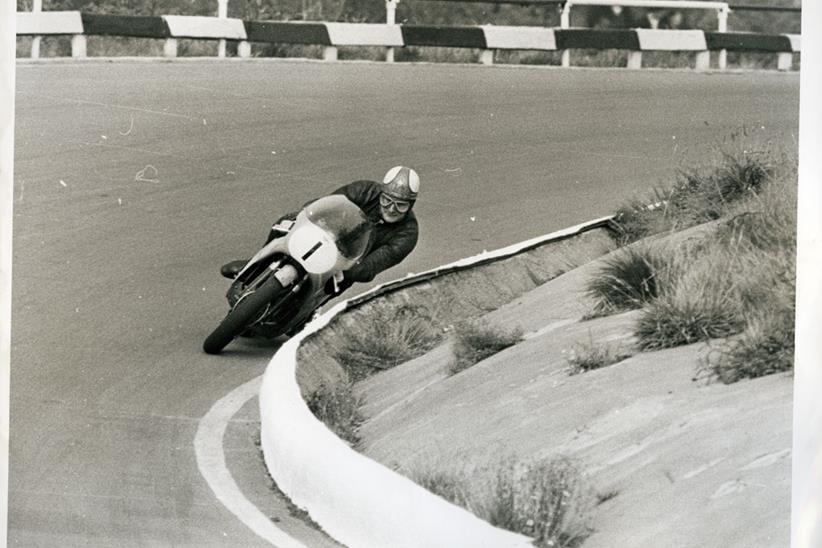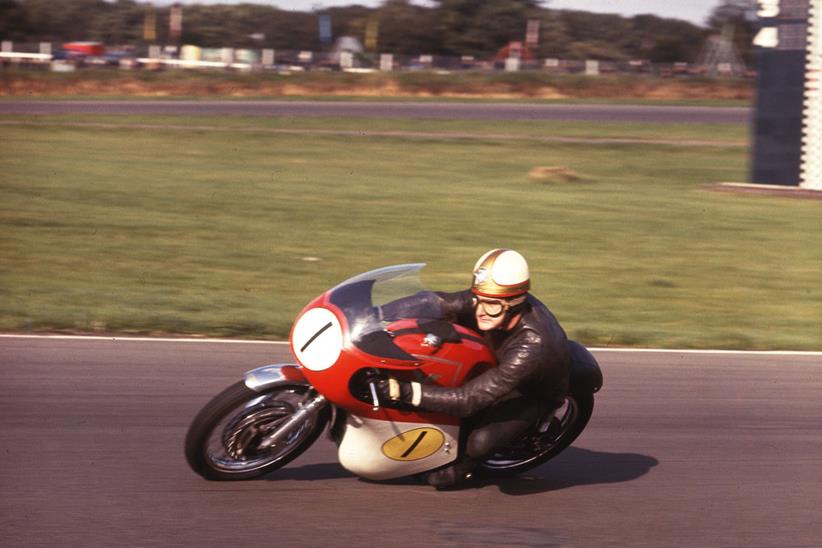Mike Hailwood - in his own words
In 1980, after retiring from racing, and only months before his death, Mike Hailwood published Racing And All That, in which he talked about everything from racing drunk to the rider he considered his greatest rival.
Racing while drunk
“I know there were some people who thought I always used to drink before I raced – I’m not that crazy! I enjoy life too much to throw it away. There were two occasions in my career when I did compete ‘under the influence’.
“The first time was on my 21st birthday at Snetterton and all the lads brought along bottles of champagne. I managed to knock quite a lot of this back between practice and the race and I remember wheeling my Norton to the start line in a fairly ‘merry’ mood. Nothing untoward happened but I didn’t make that mistake again until much later. On the second occasion I was sharing a Lola with another driver at the Nurburgring 1000km in the early 1970s. We were both out until five o’clock on race-day morning and were very much the worse for wear when the race started. We tossed up to see who should drive first and, as I was more accustomed to drinking the night away than he was, it was maybe just as well that I lost. Fortunately a wheel fell off fairly early and I was able to abandon the car without any drama.”
![]() His greatest rival
His greatest rival
“My choice for the greatest rider of the lot may come as a surprise. He’s a man who never became world champion; indeed he never so much as won a 500cc grand prix. But of all the names one could conjure with – Duke, Ago, Bob McIntyre, Alistair King, Jim Redman, Gary Hocking and so on – the one that stands out as being the hardest of all to beat was a guy called Derek Minter. I’ve thought about it a lot and I’m convinced that Derek was, on any circuit and at any time, the toughest competitor I faced.
“Agostini, of course, was the man who in terms of sheer results gave me more trouble than anyone. Ago was superb whenever he raced. Even so, I honestly don’t believe I ever felt I could not beat him, given equal machinery, or possibly even something slightly inferior.”
Patriotism
“Patriotism has never played a major part in my career and I can’t honestly say I ever felt I was ‘racing for Britain’. I would have been delighted if someone had asked me to ride a British world-beater, but there just weren’t any. In the early days I used to race Nortons and AJSs because there wasn’t anything else. But as soon as I could I get onto something better I did.”
Playing the percentages
“I really believe that in racing the likelihood of breaking one’s neck can be controlled. No one in their right mind goes flat out around the Isle of Man because if you fall off there, you’re in real trouble. The technique with the Island is to put in as many laps as possible before racing starts, learn the course, figure out where you can afford to go fast, and then race as hard as you can under the circumstances. On sections where one mistake would have you smashing into a brick wall, you roll it off a fraction. You don’t have to put
your life on the line unnecessarily. Loyalty to the cause doesn’t extend beyond loyalty to one’s own life!”
![]() His Island return
His Island return
“I realised that I would be quickly down the tubes if I tried to go grand prix racing, but I felt the Island would continue to be kind to me. What I didn’t realise was that the standard of riding on the Island had gone down in the intervening period. I found that very few of the competitors knew the circuit in the way they should have done. And because of the fear of blowing up their bikes and incurring more expense, they were trying less hard than I expected.
“I shouldn’t have been good enough, after ten years away, to win a couple of TTs. The fact that I did is, in a way, a curious indictment against the general standard of riding which exists in this country.”
Getting away with it
“On reflection, I was pretty lucky to get away with it on my comeback. I think I must have been crazy. I had given up on bikes when I started seriously on cars, and yet here I was trying to turn the clock back ten years. I’m glad now that I did it but I can see all too clearly that it could have been a total disaster. Fortunately it all turned out well, but I could so easily have been killed or seriously injured.”
Technical prowess
“My greatest difficulty in car racing was coping with the technical side. In this area, bike racing was always far more straightforward. Cars have always been much more sophisticated and I’m ashamed to say that I really didn’t go out of my way to learn.”
![]() Losing to Agostini
Losing to Agostini
“The two seasons in which I rode the best of all were those in which I did not win the 500cc world championship: 1966 and 1967. The Honda’s gearbox let me down two years in succession at the same circuit [Monza] and both times it cost me the title. However, ‘ifs’ and ‘buts’ have no place in motorsport and the fact was that Agostini had been more successful over those two seasons than I had. His era was just beginning while mine was at an end. When the Honda was performing as it should I could get away from anyone.”
Bikes; safer than cars
“I went equally hard in both, but in cars I was always aware that in a crash it would catch fire with me trapped inside. Bikes don’t fail in this manner, and if they do catch fire you can be sure the rider is well away from the machine.”
“Such a stupid accident”
2016 is the 35th anniversary of Mike Hailwood’s death.
He died on 23 March 1981 after a car accident. The 40-year-old was on his way to get some fish and chips with his son David and daughter Michelle when their Rover saloon collided with a truck that was doing an illegal U-turn. Michelle died instantly and her father passed away two days later. David survived.
“No one could believe it,” said Ralph Bryans, Hailwood’s Honda team-mate in 1967, his final year as a GP rider. “It was such a stupid bloody accident – a guy getting lost, going down the wrong road and doing a U-turn on a dual carriageway, just criminal.”
Hailwood and his daughter were buried at St Mary Magdalene church in Tamworth-in-Arden, Warwickshire. The pallbearers
at his funeral included John Surtees, Luigi Taveri, James Hunt, Geoff Duke and Giacomo Agostini.
Photography CB archive, FoTTofinders, Richard Adams






